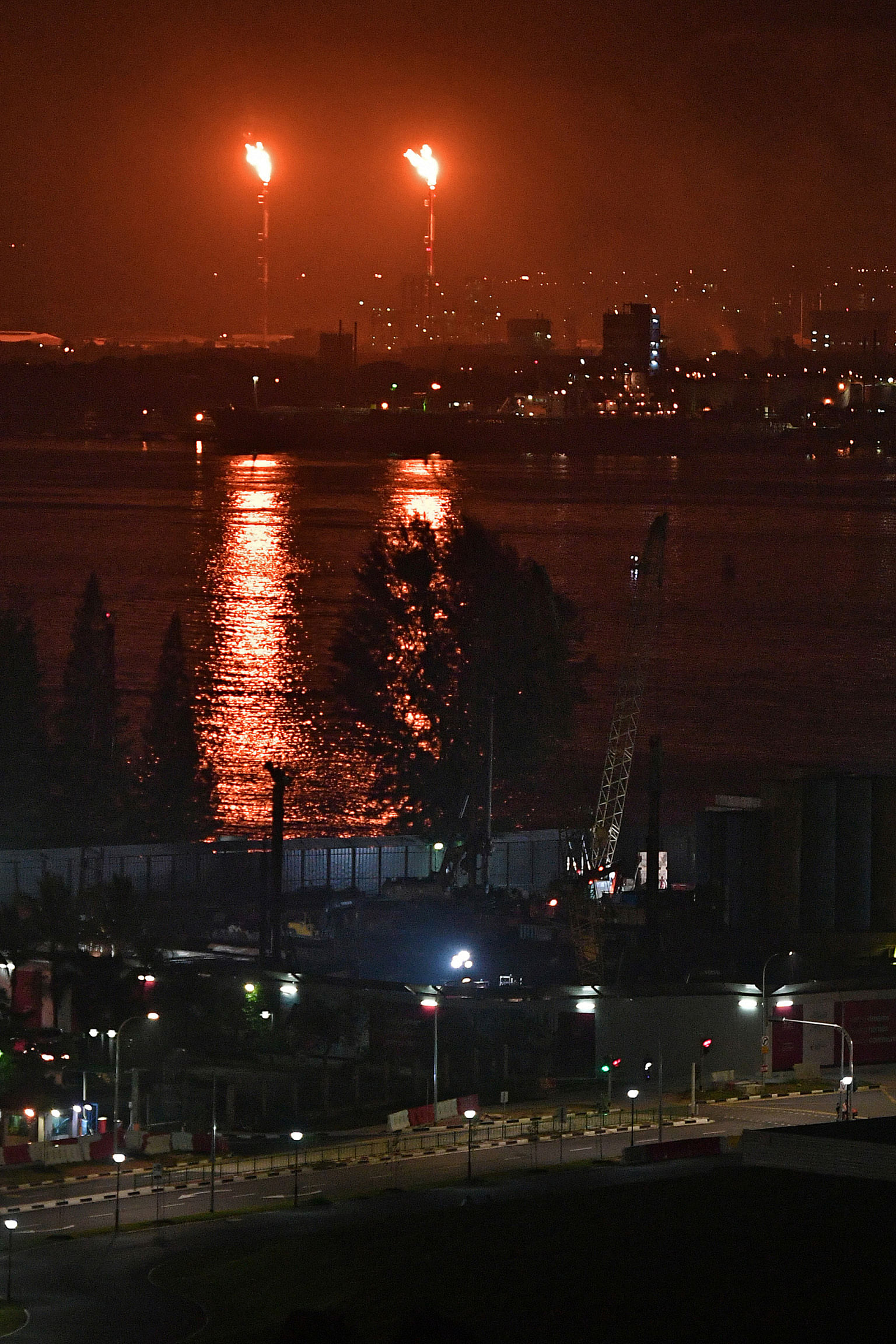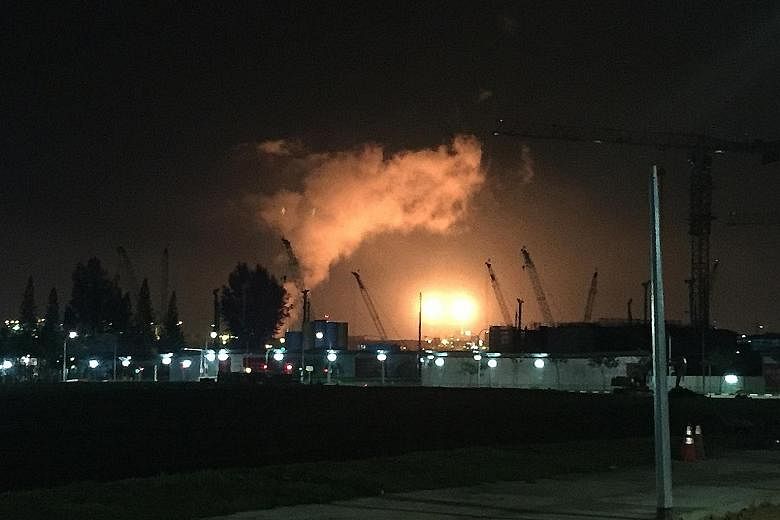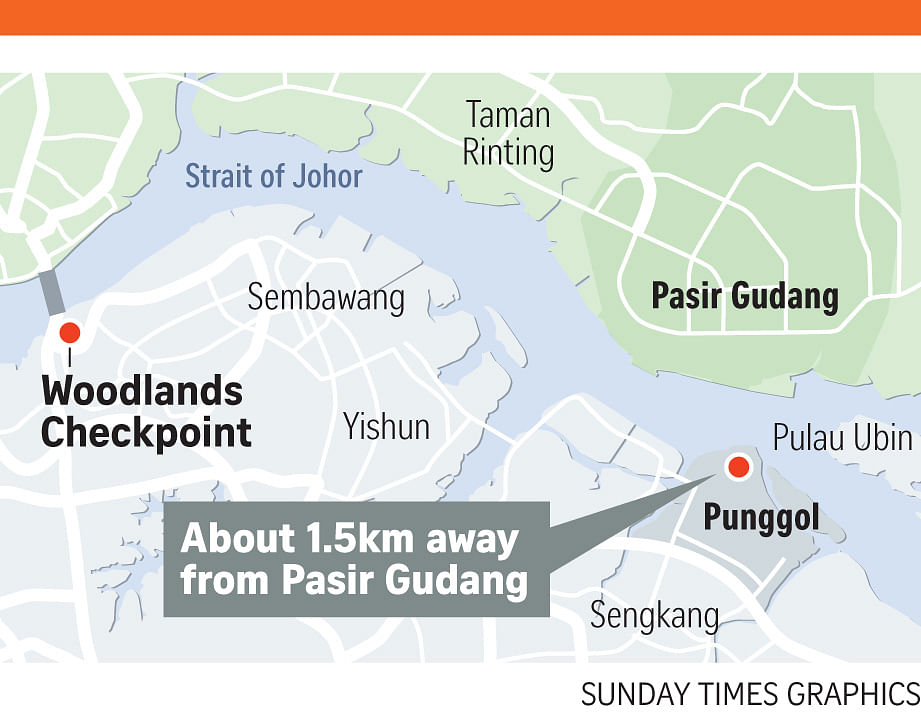Soaring towers, a low thunder-like roar and flames burning from 30m- tall chimneys.
This is the daily scene in the sleepy town of Pasir Gudang, where a large zone of its 311sq km is dedicated to heavy industries.
The town is located north-east of Singapore and is most famous among Singaporeans who make the hour-long drive there to burn rubber at the Johor Racing Circuit.
Its industrial estate, established in the 1990s, is a little more than 1.5 km across the Strait of Johor from Punggol.
Pasir Gudang is home to the Johor Port, the Sultan Iskandar Power Station and a number of petrochemical companies, some headquartered in Malaysia and Japan. Other industries there also deal with edible oils, steel and fertiliser.

Many of the 100,000 residents of Pasir Gudang, which comes under the Pasir Gudang Municipal Council, work at the industrial estate and are not bothered by the flames emitted by the gas stacks at the petrochemical plants.
Boatman Luthfi Ab Haris who lives just 10 minutes away from the industrial site, said: "If you're from around here, you'll have become used to flames and the rumbling.
"I've grown up looking at this," he said, gesturing to the flares burning from a tower in the distance when he spoke to The Sunday Times on Friday afternoon.
However, Mr Luthfi, 24, said gas flares from one of the bigger petrochemical companies, Lotte Chemical Titan, have been unusually "big" and noisy lately.
It was one of these "big" flares that prompted many Singapore residents to make reports to the Singapore Civil Defence Force (SCDF) last Thursday night and Friday morning after witnessing an orange glow with billowing white smoke in the sky and mistaking it for a fire in the Punggol or Sengkang area.
SCDF received 12 such reports on March 30 and 31 from members of the public.
Many others took to social media to share pictures of the orange glow seen from as far away as Tampines.
-
Making toxic gases less harmful
-
Besides releasing excess gas from petrochemical plants, gas flaring also burns toxic gases to convert them into less harmful ones, said chemical engineering expert Foo Swee Cheng.
Professor Foo said gases from industries might contain toxics like methyl isocyanate that can cause eye irritation or even blindness if released into the environment. "When maximum combustion happens in gas flaring, harmful gases are converted into less harmful ones like carbon dioxide and water," he said.
However, some residents of Pasir Gudang suspect the regular gas flares from nearby petrochemical plants have contributed to asthma among children.
School teacher Vincent Tan, 31, said: "I don't have the numbers, but there are definitely more students with asthma in my classes as compared to my previous schools (in other parts of Malaysia)."
If there are harmful gases in the air, respiratory physician Philip Eng said, it can affect those with existing lung disease, worsen asthma and even trigger heart attacks in those with heart disease.
Tan Tam Mei
Professor Foo Swee Cheng from the Department of Chemical and Biomolecular Engineering at the National University of Singapore said the flares are not a cause for worry.
He said: "It's controlled burning and in fact it means that the safety measure is working. It's worse if the gases are released into the environment (without burning), or if they are contained in the plant as they could explode."
The burning gets rid of waste gases generated during the petrochemical production process and gas flaring can happen every day, but the flames are usually small.
Prof Foo said the flare witnessed last week was a "large discharge" which could mean one of the three possibilities - the plant was starting up, shutting down, or there was an emergency situation.
Large flares can last for weeks as it takes time for production levels to reach full capacity when starting up.
There are about 10 petroleum chemical plants in Pasir Gudang, so Singaporeans can expect to see instances of "large" flares perhaps five to 10 times a year. This is because plants cease operations only once every 24 months, said a spokesman for a petrochemical plant in Pasir Gudang.
The company declined to be named but said most plants in the area do inform nearby residents of their activities to avoid causing panic and there have not been complaints.
Mr Wan Md Yahya, 56, a homeopathy consultant, blamed the flares for leaving soot in his home, about 2km from the industrial estate.
Madam Vasaki Govindsay, 54, who moved to Pasir Gudang more than 25 years ago, said: "If we want to live here, we have to deal with small things like that."



